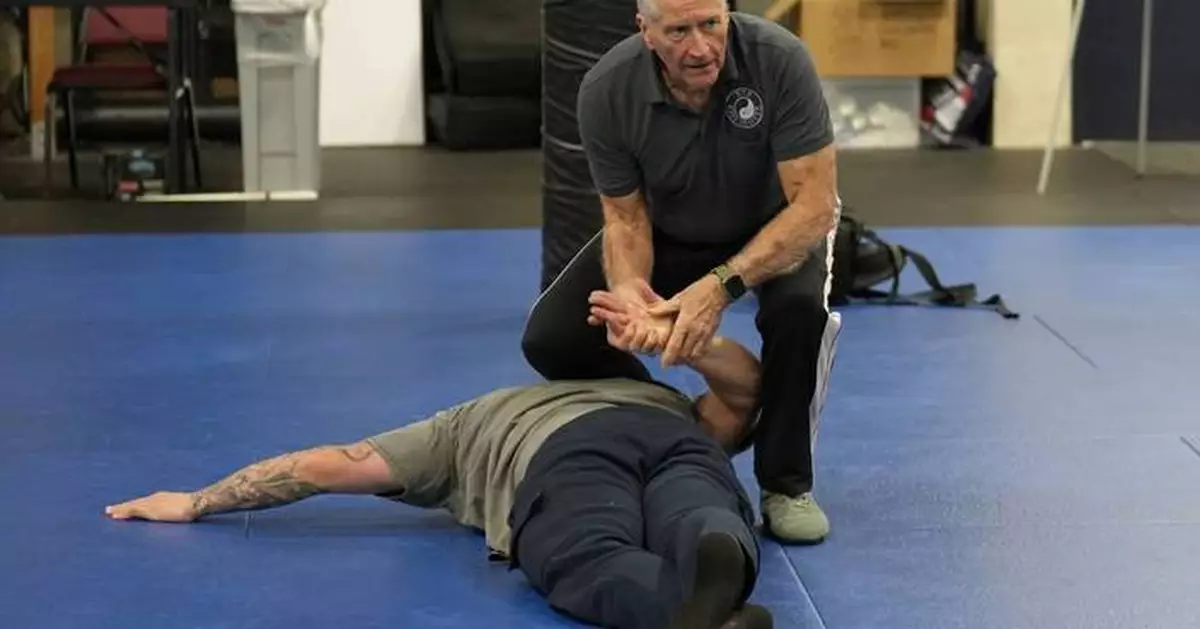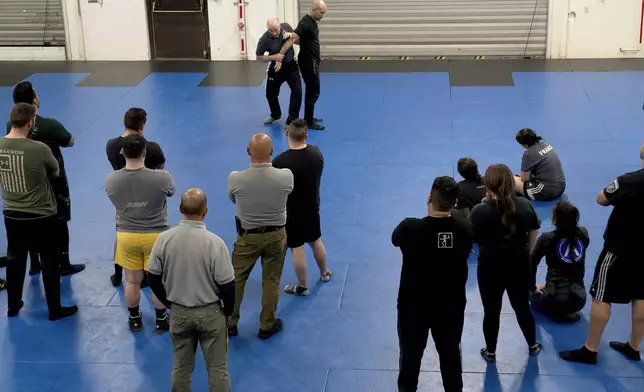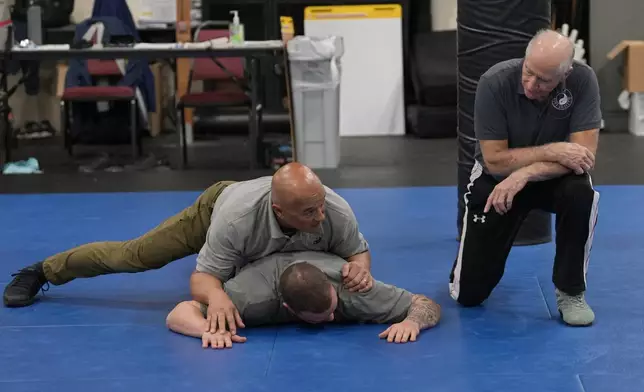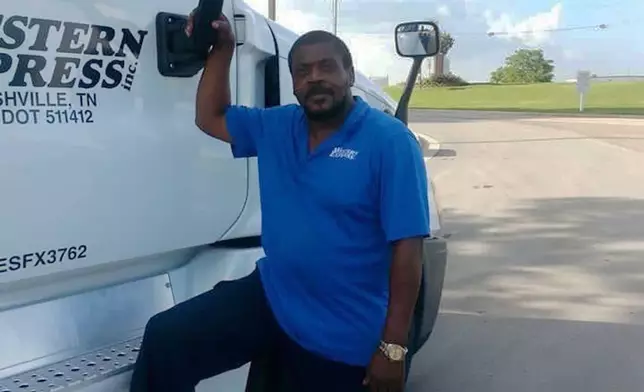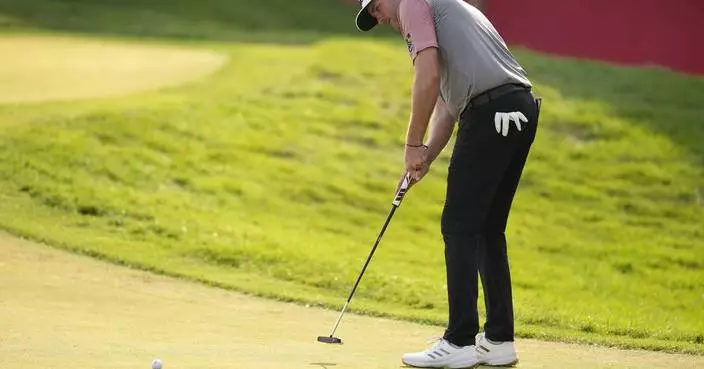For decades, police across the United States have been warned that the common tactic of handcuffing someone facedown could turn deadly if officers pin them on the ground with too much pressure or for too long.
Recommendations first made by major departments and police associations culminated in a 1995 federal safety bulletin that explained keeping someone on their chest in what’s known as prone restraint can dangerously restrict breathing. The solution: Once cuffed, turn them onto their side.
Yet today, what some officers are doing on the street conflicts with what has long been recognized as safe, a deadly disconnect that highlights ongoing failures in police training, an Associated Press investigation has found.
The cases involving prone restraint are among more than 1,000 AP documented over a decade of people who died not by gunshot but after officers used force that is not meant to kill. In all, at least 740 of these encounters involved prone restraint, making it the most prevalent tactic. It was also commonly misapplied.
In about half of the 740 cases, officers continued to pin someone down after handcuffing, often pressing with knees or hands when the person was controlled. That included people especially susceptible to the risks of prone restraint — those who were obese, impaired by drugs or had a medical condition.
Many people were held down longer than five minutes. In the extreme, at least 13 were down for 10 minutes or more — longer than George Floyd, whose 2020 death thrust policing back into the national conversation. Other cases involved police lying across, sitting or even standing on someone’s back.
Training that is ineffective, or that contradicts longstanding best practices, happens in part because policing in the U.S. lacks a national rulebook. The federal government’s 1995 guidance that warns against pressing someone down is just that — guidance, not the law.
Each state writes its own standards, and individual departments and training centers determine what officers hear in classrooms and gyms. The safest techniques don’t always filter down to officers.
In 2021, California became the rare state to pass a law limiting police tactics that could result in death due to the positioning of someone’s body. One intent was to limit the use of prone restraint. Yet AP found instructors at several state-certified training centers continue to teach — wrongly — that holding someone facedown doesn’t cause death by what’s known as positional asphyxia, which happens when the chest can’t expand, starving the body of oxygen.
That message traces back to a small group of police-aligned lawyers, physicians, experts and academics who authored studies they have used to defend officers facing wrongful death lawsuits. Experts who challenge this group in court say bad information is putting officers in a position of doing what they think is right, only to end up with a dead suspect and a court date.
“Body weight will restrict the ability to expand the chest, and they’ll die, and everybody knows it,” said Roger Clark, a retired Los Angeles County Sheriff’s lieutenant who testifies about police policies and training in use-of-force cases, usually against officers.
Officers almost always used prone restraint with other force, and within AP’s database medical officials cited prone position or asphyxia due to restraint as a cause or contributing factor in 61 of the 740 cases that involved the maneuver during the investigation’s 2012-2021 timeframe. In dozens of other cases, officers used prone restraint and “restraint” was cited as causing or contributing to the death, but prone position or restraint was not specified.
In many other cases, the cause of death focused on drugs or medical conditions instead of force. Due to the suppression of records, reporters were not always able to get the official determination.
Some states said they require robust training. Since at least 2011, Georgia has mandated that officers learn how to safely restrain subjects facedown, according to the agency that oversees training. But officers in at least three Georgia deaths said they didn’t recall learning or were never taught the risks, according to AP’s investigation, done in collaboration with the Howard Centers for Investigative Journalism and FRONTLINE (PBS).
One such death in Sylvester, a town surrounded by cotton fields and peanut farms, shows how quickly a person’s health can deteriorate when they are held down.
On an autumn night in 2016, Sgt. Adam Celinski responded to a 911 call about a paranoid man banging on the door of a woman’s home.
The man, Terrell “Al” Clark, told Celinski he was high on “powder” and needed help. Celinski’s body-camera video showed he was calm and courteous as he handcuffed the man. Clark also was polite, but neighbors watched as he began to struggle and the officer got Clark facedown on some roadside grass, using a knee and hand to ensure he stayed there.
The 47-year-old trucker had heart disease and was a heavy cocaine user, two risk factors Celinski couldn’t have seen. After a minute on the ground, Clark lost consciousness. Minutes later, he was dead. Clark’s girlfriend Bontressa Brown, seven months pregnant with his son, arrived after he was loaded into the ambulance.
In an interview, Celinski told AP that on that night he had not known holding someone facedown could be risky, and had safely used the technique his entire career.
While the Georgia Public Safety Training Center could not document exactly what Celinski was taught as a recruit in 2013, its leader of basic training told the AP that positional asphyxia was part of his curriculum, and instructors had to certify that graduates understood it. Told that, Celinski said positional asphyxia may have been discussed briefly during the 408-hour basic training course. Amid everything cadets must learn, he said, any lesson didn’t stick.
A medical examiner ruled Clark’s death an accident caused by cocaine and heart failure, and did not cite prone position. Celinski said he doesn’t believe the restraint contributed. Given subsequent training, Celinski said he now repositions suspects — and would have with Clark, to ensure he did everything right.
“I would have definitely done something differently,” Celinski, now a lieutenant with the Worth County Sheriff’s Office, said of Clark. “But I didn’t know.”
What officers learn about the risks of prone restraint depends on geography.
Nearly all states have a Peace Officer Standards and Training agency that sets out what must be taught, so AP asked each commission whether it requires instruction on positional asphyxia.
Among the states that responded, 10 said they did not require positional asphyxia training. Some of the 20 states that said they do include that training had deaths blamed at least in part on prone restraint, including Florida, Rhode Island and Georgia. Officers in all three states testified in lawsuits that they were not trained, or didn’t recall any training.
After Floyd’s death, lawmakers across the country introduced bills targeting prone restraint. While most failed, California passed a law intended to curtail its use, and legislatures in Pennsylvania and Colorado are considering measures.
California’s 2021 law said departments “shall not authorize techniques or transport methods that involve a substantial risk of positional asphyxia.” The legislation’s sponsor, Assemblymember Mike Gipson, said he wanted to limit prone restraint, because “it causes death.” The legislation does not include criminal penalties for violating it.
The California Police Chiefs Association opposed Gipson’s bill, writing that it would “remove tools needed to overcome dangerous individuals.” But the law hasn’t stopped some instructors at state-certified training centers in Northern California and Riverside County from continuing to teach that holding someone facedown is a best practice.
“We teach that the safest place for a struggling suspect is to put them on their stomach,” Riverside County Sheriff Chad Bianco said of training for his deputies in an interview. “And we teach them that that is not dangerous, even though some people say that it is.”
Bianco said that if a suspect is not struggling, a deputy could sit them up, “just to be on the nicer side of law enforcement.” AP documented eight restraint deaths involving the sheriff’s office. Bianco blamed methamphetamine for the deaths, though that was not always the official cause. “There is nothing that has ever come out scientifically that says positional asphyxia is the thing,” according to Bianco.
Among the most senior instructors in Northern California is David Rose. In his 40 years as a trainer, Rose has taught thousands of officers that prone restraint is safe. His pupils take his teachings back to their departments as instructors and, in some cases, investigate deaths involving prone restraint.
Rose said he instructs officers to hold a person facedown with as little pressure as necessary, unless they are combative. He said the methods he teaches don’t run afoul of California’s law because prone restraint doesn’t carry a serious risk of positional asphyxia.
“Positional asphyxia doesn’t happen at all. In the field, it doesn’t happen,” Rose said in an interview at a regional training center in Sacramento.
“Putting weight on a person’s back in a prone position does not lead to them expiring unless it’s enough that it can actually squash them,” he said.
Placing someone on their stomach is not inherently life-threatening, and police use it every day without harming people. But AP’s investigation identified 44 cases where a medical examiner or coroner said prone restraint caused or contributed to the death, and another 17 which cited positional asphyxia or asphyxia due to restraint. Informed of this finding, Rose said he relies on the latest information he has gathered.
Rose bases his conclusions on several studies by experts with longstanding ties to law enforcement. The principal author of one such study is Darrell L. Ross, a criminal justice professor at Valdosta State University who has worked for decades in and around law enforcement, including as a prison guard and police trainer. Since 1988, Ross has been hired to defend officers as an expert witness, according to his biography, and has done so in dozens of cases.
For his study, Ross asked 17 law enforcement agencies in six states to collect data on arrests. Over a year, Ross wrote, the agencies reported officers used prone position in 1,085 “violent arrest incidents,” for about one to five minutes each time, and nobody died.
While he acknowledged the limitations of a study that relies on officers to self-report force, Ross said the results are significant. In an interview, he attributed deaths of people held facedown to drug use or other conditions, not prone restraint.
“I’m not going to say it can never happen,” Ross said. “I mean, that would be foolish, but I don’t think that has the compelling percentage or likelihood or even the statistical significance.”
Dr. Alon Steinberg, a cardiologist who has authored more recent studies that link deaths to prone restraint, is a leading voice against views like those of Ross. Steinberg said the Ross study is flawed because it includes too few departments and officers knew they were under scrutiny.
“Prone restraint has (been) shown to cause death,” Steinberg said. “What I’m worried about is the fact that people are dying because of it and the cops don’t know better.”
Soon after the AP shared its findings with Rose recently, the trainer wrote that he had just received one of Steinberg’s studies, and planned to add it to his lecture notes.
AP contacted the California Commission on Peace Officer Standards and Training and asked whether Rose's teachings on positional asphyxia align with state requirements. “POST is taking action and has notified the (Sacramento training) center that they are not compliant with the law. The issue will be remedied," spokesperson Meagan Poulos wrote in an email Monday.
What has become widespread agreement on the dangers of prone position began to coalesce about 30 years ago. That’s when agencies as diverse as the New York Police Department and the Georgia Bureau of Investigation made videos warning about positional asphyxia. One major industry group, the International Association of Chiefs of Police, published a “training key” in 1993 that said prone position can kill.
To understand what officers knew before deaths involving prone restraint, reporters scoured thousands of pages of interviews and depositions.
In nearly 100 cases, AP identified documents that showed whether officers had training in or otherwise knew the risk of positional asphyxia. In 80 deaths, at least one involved officer had been trained in or knew the potential dangers, though they did not always turn someone off their stomach promptly. Officers in another 14 deaths said they had no training and did not know the risks; could not recall training; or — in a few cases — were trained that prone position is safe.
Some officers repeated two common misconceptions that experts and trainers have long tried to dispel: That if someone can talk they can breathe, and that someone struggling for air is resisting arrest.
To speak, air must move across the vocal cords in the throat. To inhale oxygen and expel carbon dioxide, air must travel to and from the lungs. The short additional distance can be huge if someone is laboring to breathe.
James Britt, a 50-year-old lift operator at a boatyard, was intoxicated when an officer in Mount Pleasant, South Carolina, stopped to help him fix a flat tire. Other officers arrived and tensions rose as they tried to arrest him for disorderly conduct. Britt grew agitated as officers got him facedown, handcuffed his wrists behind his back and secured his legs, according to a report by investigators.
“Roll me over. I can’t breathe. Please let me breathe,” he could be heard screaming on dashcam video, to which an unidentified officer replied, “if you’re talking, you’re breathing.”
Officer Darren Raley later told investigators that he thought Britt was fine when he was yelling. “It’s kind of like a crying baby in a choking situation,” Raley said. “If they are crying, they are breathing.” After medics gave Britt the drug ketamine to sedate him, Raley noticed he was no longer breathing and alerted the medics, later saying they didn’t respond with urgency.
In all, three officers held Britt down for 19 minutes. His cause of death was “restraint asphyxia and the toxic effects of ketamine.” Britt’s widow filed a lawsuit against police and medics and won a $4.1 million settlement. The AP reached out to Raley and the police department, but they declined to comment.
In cases AP reviewed, some officers also said the person was being combative or resisting — when they may just have been struggling to breathe, like a drowning swimmer who flails in a panic.
“There’s a big difference between fighting the officers and fighting for breath,” said Seth Stoughton, a University of South Carolina law professor and national use-of-force expert who as a former officer and police trainer has written extensively about prone restraint.
Harriett Jefferson had called 911 many times seeking help for her son Reginald Payne, a 48-year-old diabetic who sometimes acted incoherently when his blood sugar levels were low. In February 2020, she called for the last time.
Payne, a college graduate and author, was sitting on a couch in the family home in Sacramento, California, swinging his arms and legs when paramedics arrived. They couldn’t check him, so they summoned police for help.
Three officers spoke with Payne for about 25 seconds before he slid to the floor and they rushed in. They flipped him onto his stomach and handcuffed his wrists, then two officers positioned themselves on each side of his back and held him in place while a third crossed his feet and pushed them toward his buttocks.
At around 6 feet tall and 250 pounds, Payne was obese — a well-established risk factor for prone position. Officers held him down that night for seven minutes, telling Payne he was all right as he thrashed his head side to side, gasping for air. “I can’t breathe,” he yelled. “Momma! Daddy!”
A lawsuit from Payne’s family alleged the officers were not properly trained. Under oath, one said he had learned the dangers of positional asphyxia but needed to control Payne. “I felt it was just his effort to escape us or get away from us,” Officer John Helmich, one of the officers who knelt by his shoulder, said of Payne’s movements during a deposition.
The Sacramento Police Department declined to make Helmich available for questions. The city agreed to settle the lawsuit last month for $4.3 million.
Eventually, first responders put Payne on a gurney and wheeled him to a waiting ambulance. “He’ll be right as rain when he comes home,” a fire department captain assured Payne’s mother.
Payne never left the hospital. A coroner determined his cause of death was “sudden cardiac arrest while being restrained in prone position.”
Contributing to this story from the Howard Center for Investigative Journalism at the University of Maryland were Sean Mussenden, Mary Dalrymple, Ceoli Jacoby and Angelique Gingras. Contributing from AP were John Seewer, Reese Dunklin and Angeliki Kastanis.
This story is part of an ongoing investigation led by The Associated Press in collaboration with the Howard Center for Investigative Journalism programs and FRONTLINE (PBS). The investigation includes the Lethal Restraint interactive story, database and the documentary, “Documenting Police Use Of Force,” which premiered April 30 on PBS and is available online. To view stories by journalists at the Howard Center for Investigative Journalism programs, go here.
The Associated Press receives support from the Public Welfare Foundation for reporting focused on criminal justice. This story also was supported by Columbia University’s Ira A. Lipman Center for Journalism and Civil and Human Rights in conjunction with Arnold Ventures. The AP is solely responsible for all content.
Contact AP’s global investigative team at Investigative@ap.org or https://www.ap.org/tips
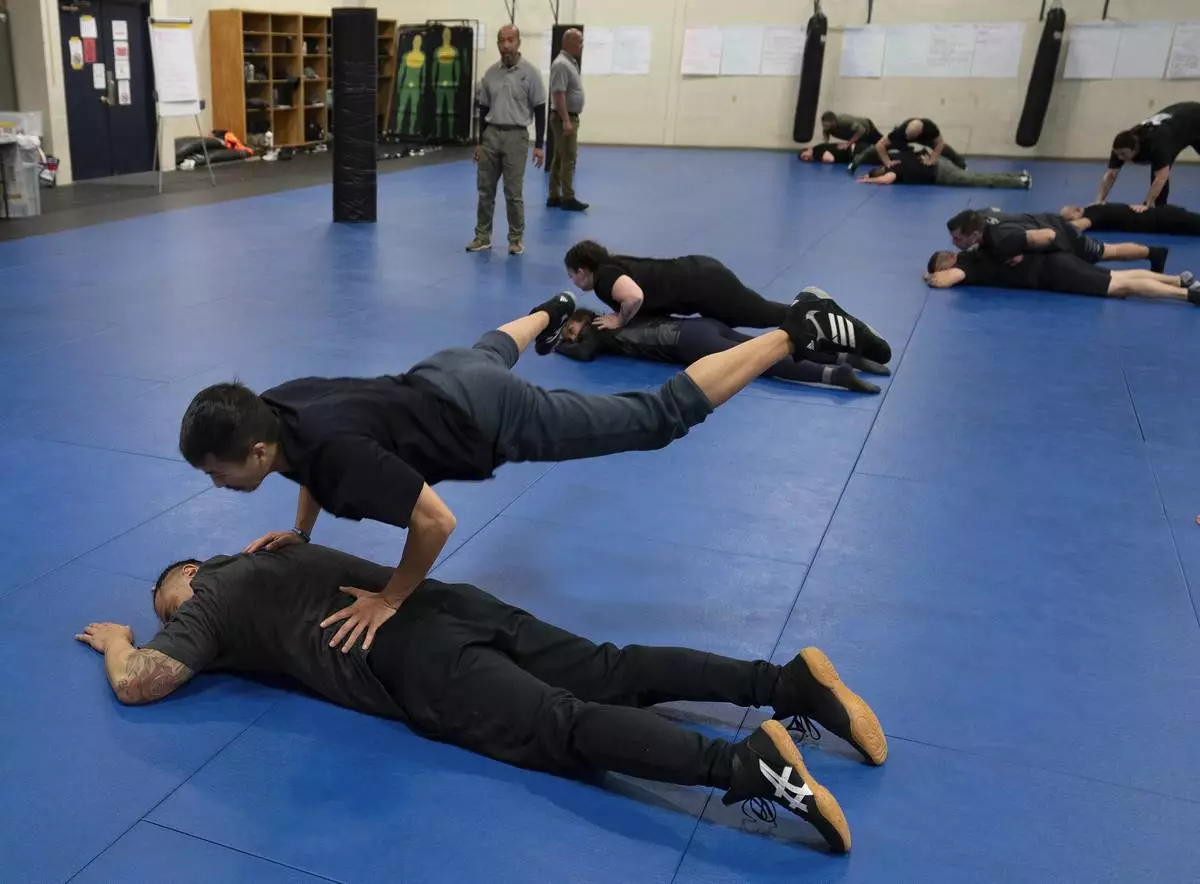
Students practice a maneuver on fellow students during an Arrest & Control Instructor course in Sacramento, Calif., on Thursday, Jan. 18, 2024. Law enforcement officers from various agencies attend the class where they receive instruction on basic techniques of arrest and control that they to take back to their agencies to pass along to fellow officers. (AP Photo/Rich Pedroncelli)
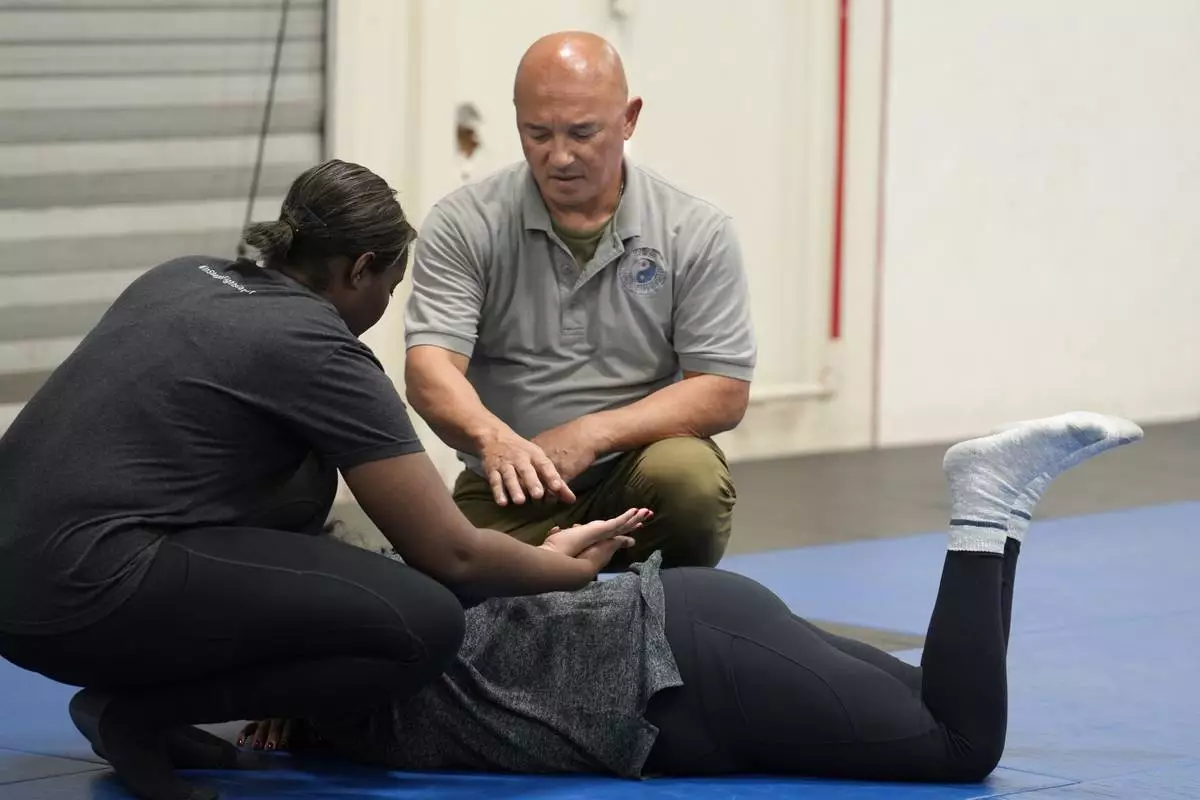
Instructor Enrico Solomon critiques a student on a prone handcuffing technique during an Arrest & Control Instructor course in Sacramento, Calif., on Thursday, Jan.18, 2024. Law enforcement officers from various agencies attend the class where they receive instruction on basic techniques of arrest and control that they to take back to their agencies to pass along to fellow officers. (AP Photo/Rich Pedroncelli)

With the help of a student, Instructor Dave Rose, top left, demonstrates a control technique during an Arrest & Control Instructor course in Sacramento, Calif., on Thursday, Jan. 18, 2024. Law enforcement officers from various agencies attend the class where they receive instruction on basic techniques of arrest and control that they to take back to their agencies to pass along to fellow officers. (AP Photo/Rich Pedroncelli)

Instructor Dave Rose, right, watches as fellow instructor Enrico Solomon, top, demonstrates the basics of ground control on a student during an Arrest & Control Instructor course in Sacramento, Calif., on Thursday, Jan.18, 2024. Law enforcement officers from various agencies attend the class where they receive instruction on basic techniques of arrest and control that they to take back to their agencies to pass along to fellow officers. (AP Photo/Rich Pedroncelli)
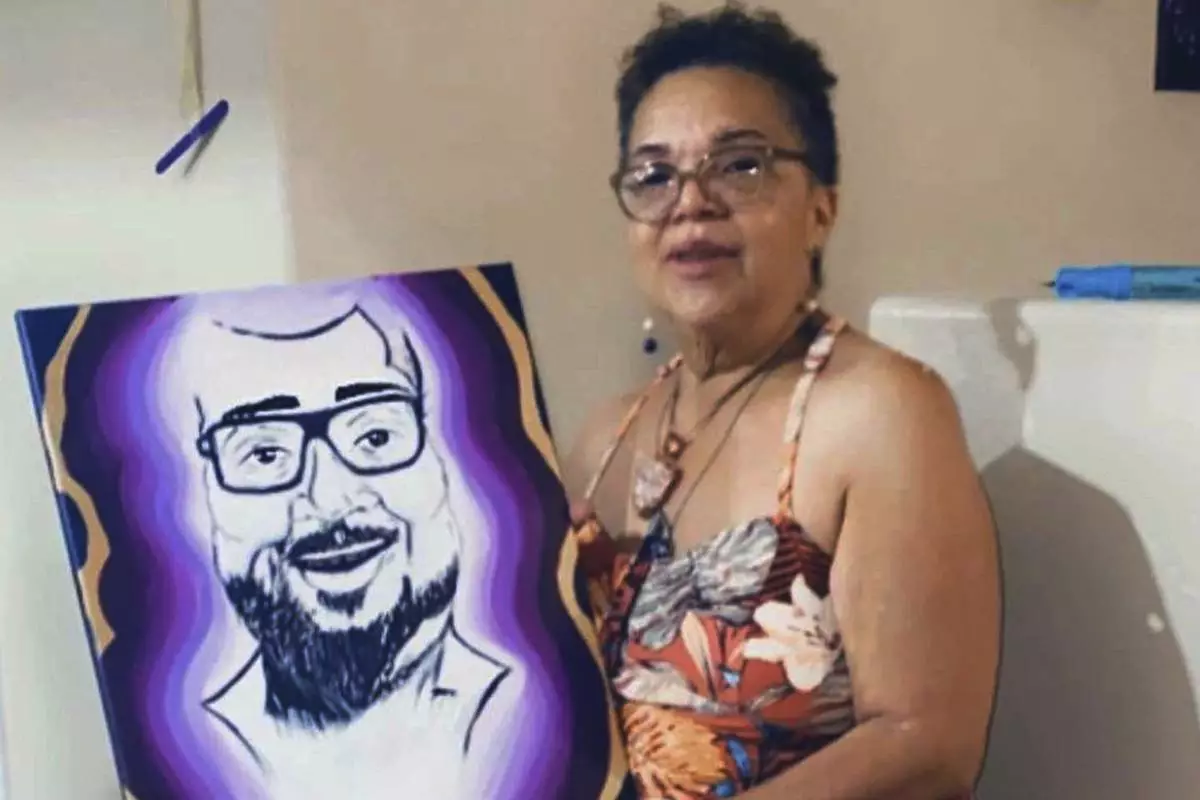
This photo provided by Harriett Jefferson shows her with a portrait of her son, Reginald Payne. Payne, 48, was uncontrollably swinging his arms and legs during a diabetic episode in 2020 when paramedics arrived at his Sacramento, Calif., home. They asked for police to help controlling Payne so they could check him. Officers got him facedown on the floor, holding him down for seven minutes. A coroner determined that "sudden cardiac arrest while being restrained in prone position" caused his death. (Courtesy Harriett Jefferson via AP)
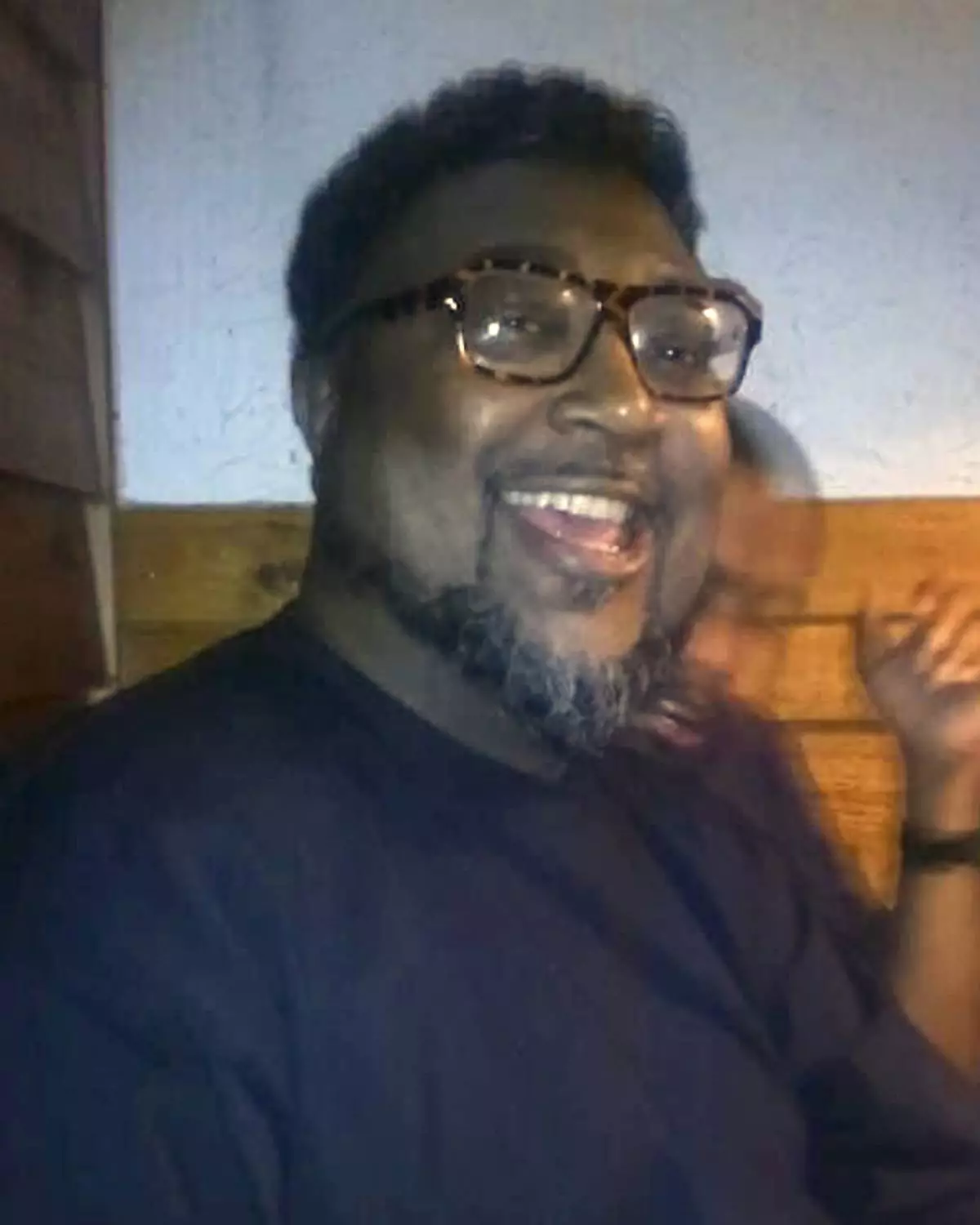
This family photo shows Reginald Payne of Sacramento, Calif. Payne, 48, was uncontrollably swinging his arms and legs during a diabetic episode in 2020 when paramedics arrived at his home. They asked for police to help controlling Payne so they could check him. Officers got him facedown on the floor, holding him down for seven minutes. A coroner determined that "sudden cardiac arrest while being restrained in prone position" caused his death. (Courtesy Harriett Jefferson via AP)

Darrell Ross, a criminal justice professor at Valdosta State University, gives a presentation on his prone restraint studies while speaking to members of law enforcement attending a conference hosted by the Institute for the Prevention of In-Custody Deaths in Las Vegas on Oct. 24, 2023. (AP Photo/Martha Bellisle)
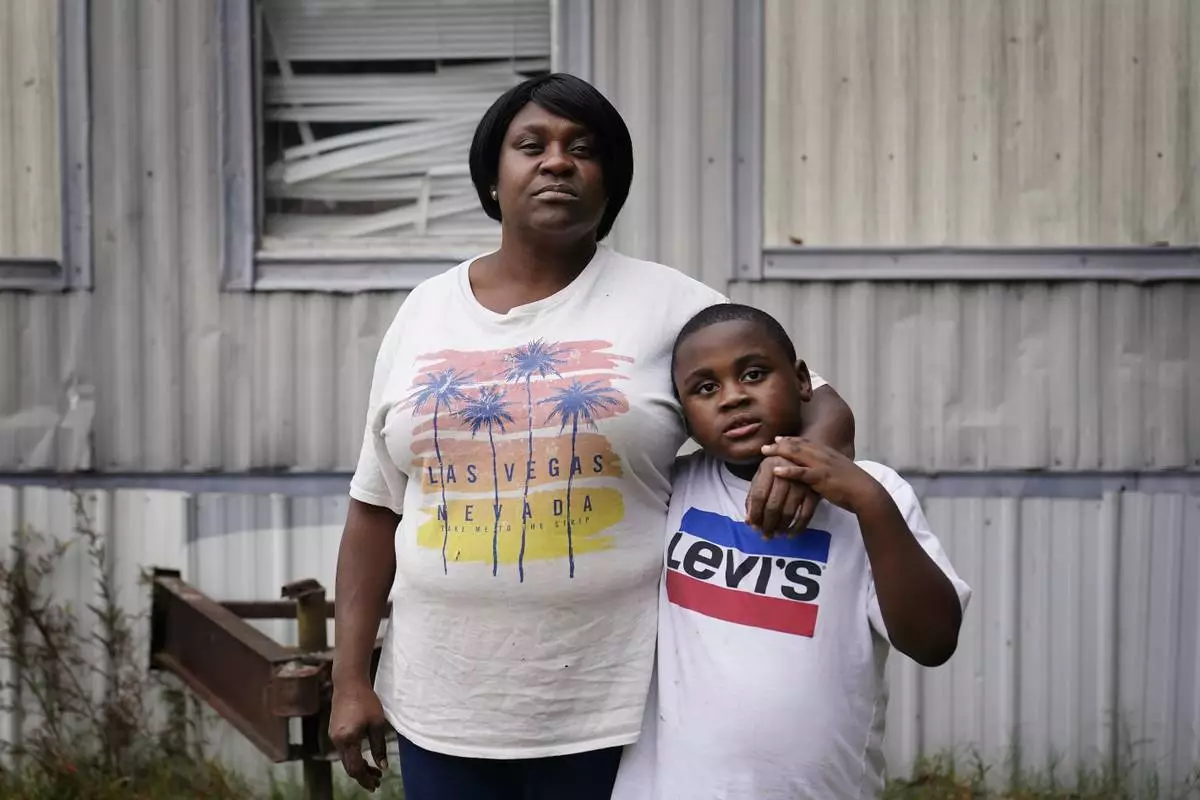
Bontressa Brown, 47, left, and Yuri Brown, 7, right, stand for a portrait outside their home in Sylvester, Ga., on Tuesday, Nov. 14, 2023. “I miss his father daily. He’d have been a great father. He was looking forward for his son. He was a great, great man." (AP Photo/Brynn Anderson)

This family photo shows Terrell “Al” Clark of Sylvester, Ga. The 47-year-old trucker had heart disease and a history of cocaine use, which elevated the risks to Clark when he was handcuffed while facedown by police in Sylvester. (Courtesy Bontressa Brown via AP)
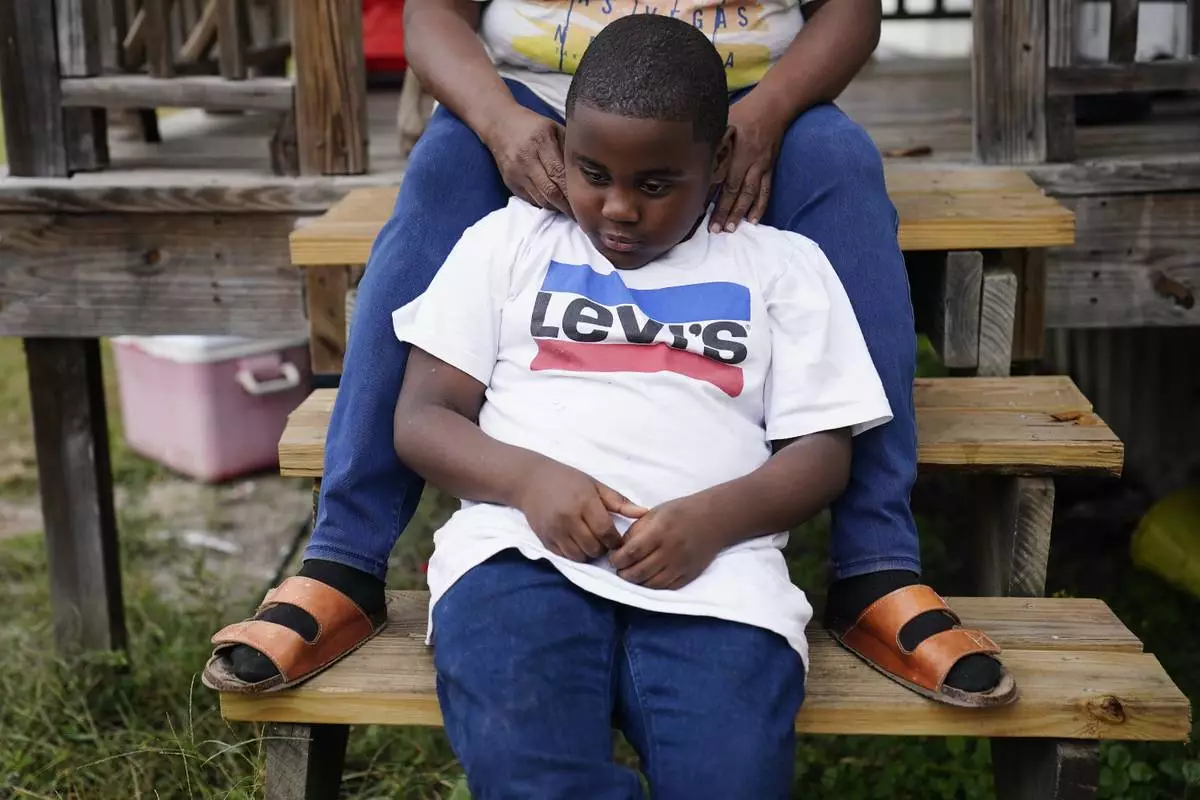
Yuri Brown, 7, sits with his mother, Bontressa Brown, for a portrait outside their home on Tuesday, Nov. 14, 2023, in Sylvester, Ga. Bontressa was seven months pregnant with Yuri when Terrell “Al” Clark died after an encounter with police in Sylvester. Clark was Yuri’s father. (AP Photo/Brynn Anderson)
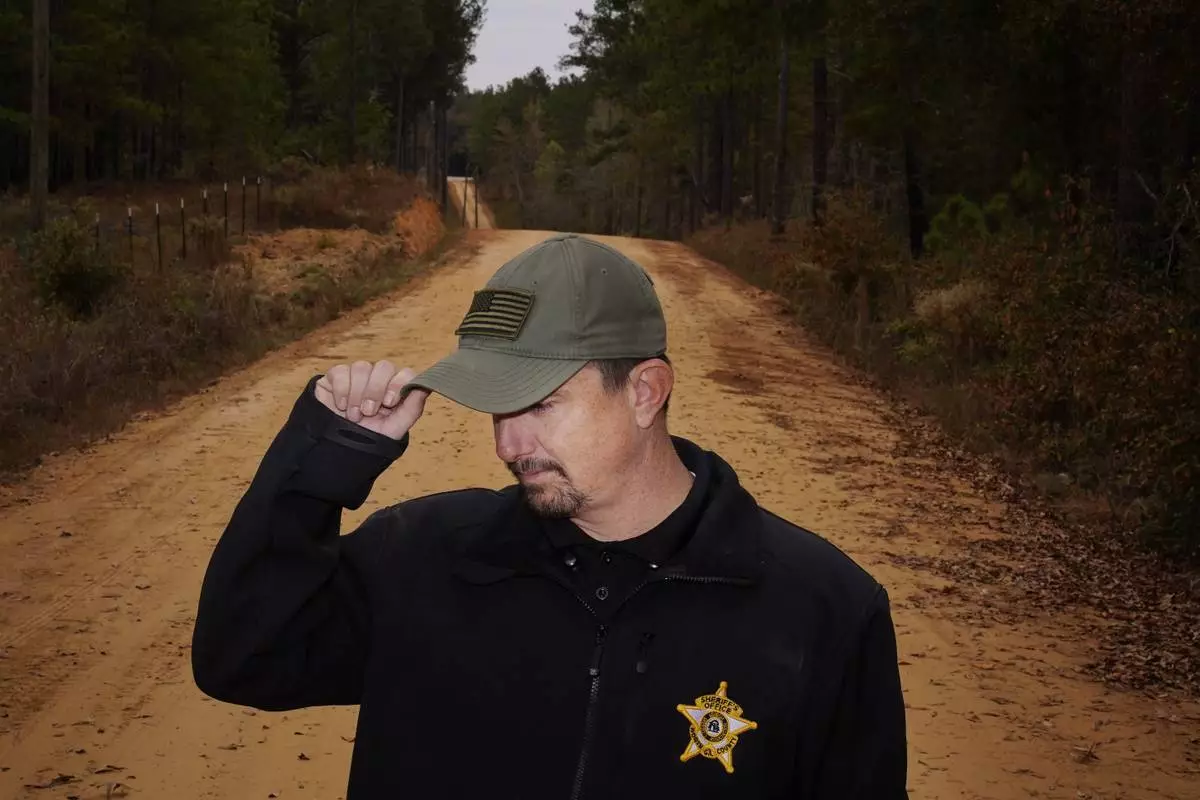
Worth County Sheriff's Lt. Adam Celinski stands for a portrait on Tuesday, Nov. 14, 2023, in Sylvester, Ga. As a sergeant with the Sylvester Police Department in 2016, Celinski responded to a 911 call of a paranoid man banging on the door of a woman’s home. The man, Terrell “Al” Clark, approached Celinski saying he was high and needed help. Celinski’s body-camera video showed he was calm and courteous as he handcuffed the man. Clark also was polite, but neighbors watched as he began to struggle and the officer got Clark facedown on some roadside grass, using a knee and hand to ensure he stayed there. (AP Photo/Brynn Anderson)
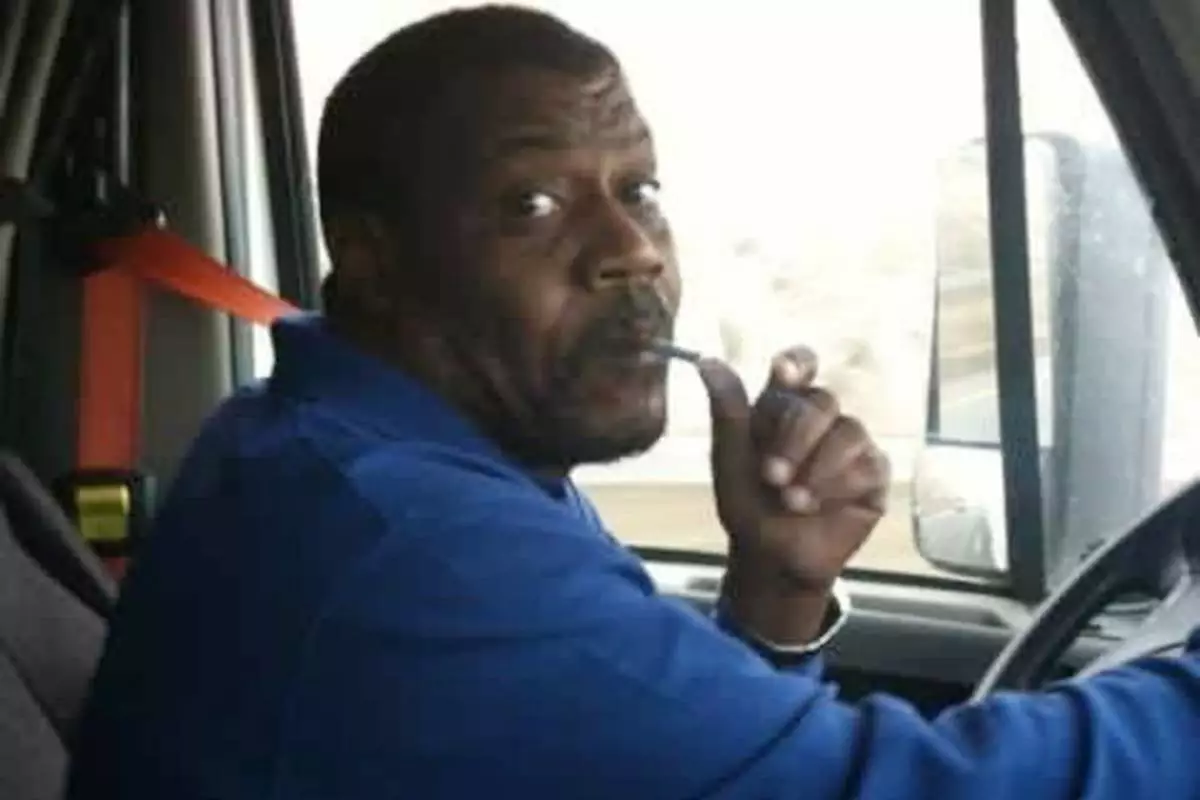
This family photo shows Terrell “Al” Clark of Sylvester, Ga. The 47-year-old trucker had heart disease and a history of cocaine use, which elevated the risks to Clark when he was handcuffed while facedown by police in Sylvester. (Courtesy Bontressa Brown via AP)
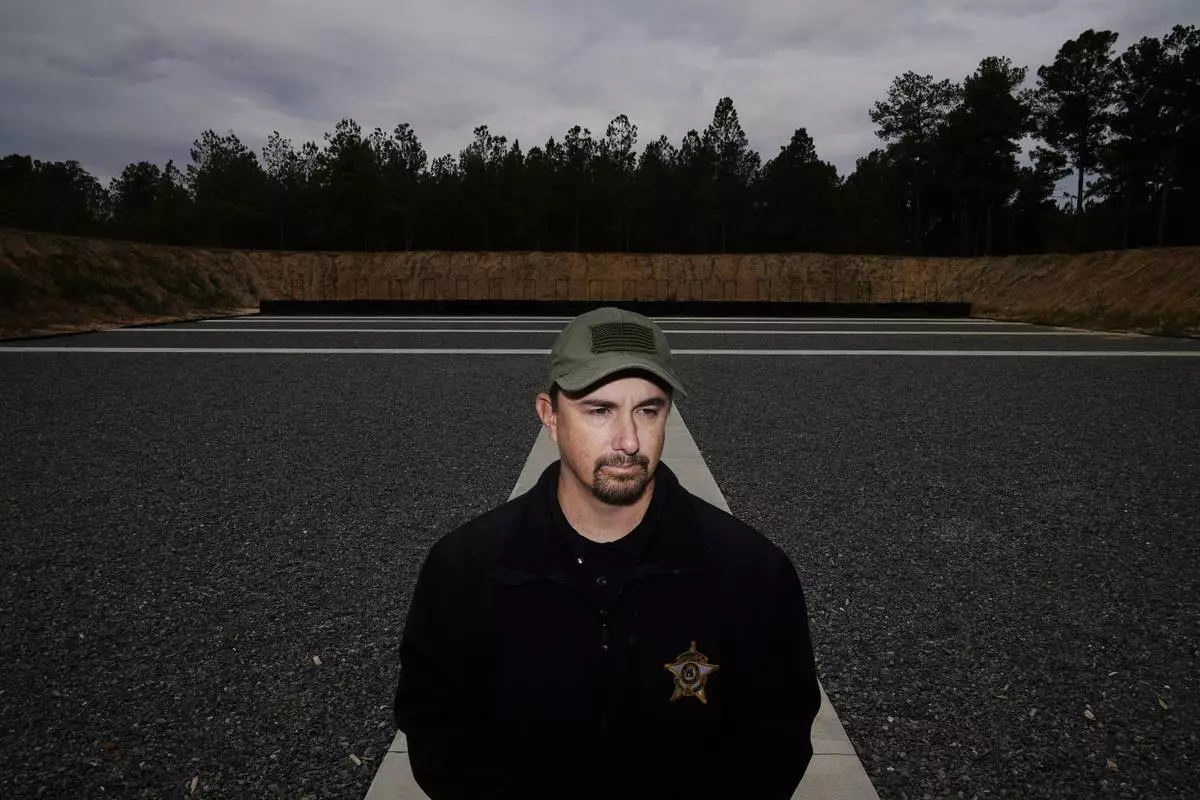
Worth County Sheriff's Lt. Adam Celinski stands for a portrait on Tuesday, Nov. 14, 2023, in Sylvester, Ga. As a sergeant with the Sylvester Police Department in 2016, Celinski responded to a 911 call of a paranoid man banging on the door of a woman’s home. The man, Terrell “Al” Clark, approached Celinski saying he was high and needed help. Celinski’s body-camera video showed he was calm and courteous as he handcuffed the man. Clark also was polite, but neighbors watched as he began to struggle and the officer got Clark facedown on some roadside grass, using a knee and hand to ensure he stayed there. (AP Photo/Brynn Anderson)
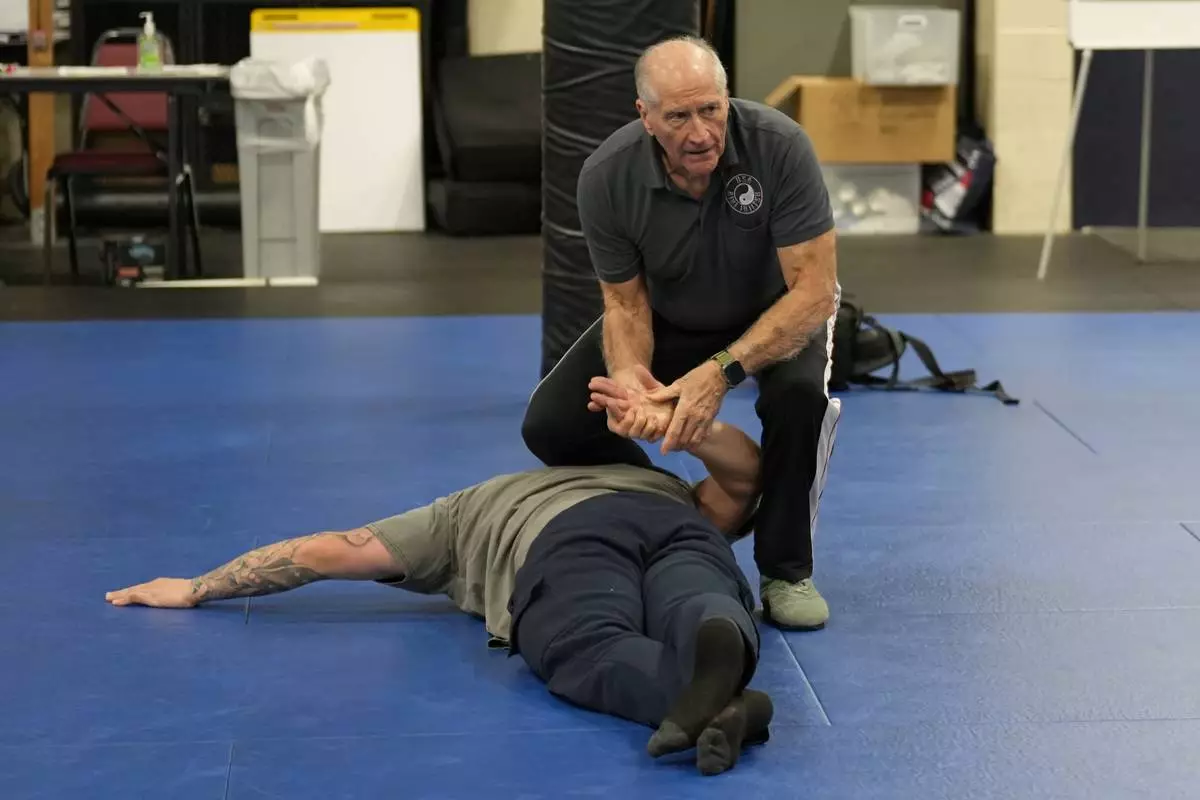
Instructor Dave Rose demonstrates a prone handcuffing position on a student during an Arrest & Control Instructor course in Sacramento, Calif., on Thursday, Jan. 18, 2024. Rose has trained generations of officers that prone restraint is safe. His pupils are instructors who take his training back to their departments. (AP Photo/Rich Pedroncelli)


